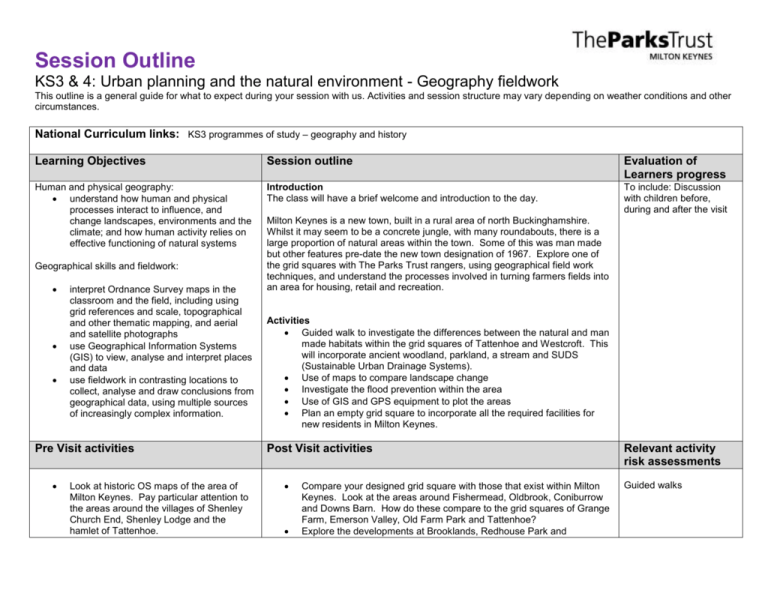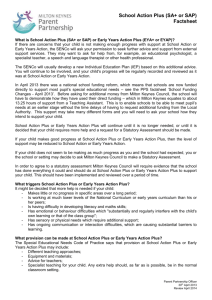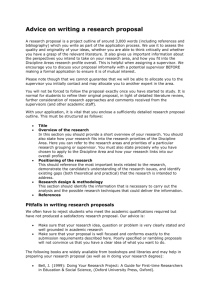Session: Senses and the world around us
advertisement

Session Outline KS3 & 4: Urban planning and the natural environment - Geography fieldwork This outline is a general guide for what to expect during your session with us. Activities and session structure may vary depending on weather conditions and other circumstances. National Curriculum links: KS3 programmes of study – geography and history Learning Objectives Session outline Evaluation of Learners progress Human and physical geography: understand how human and physical processes interact to influence, and change landscapes, environments and the climate; and how human activity relies on effective functioning of natural systems Introduction The class will have a brief welcome and introduction to the day. To include: Discussion with children before, during and after the visit Geographical skills and fieldwork: interpret Ordnance Survey maps in the classroom and the field, including using grid references and scale, topographical and other thematic mapping, and aerial and satellite photographs use Geographical Information Systems (GIS) to view, analyse and interpret places and data use fieldwork in contrasting locations to collect, analyse and draw conclusions from geographical data, using multiple sources of increasingly complex information. Pre Visit activities Look at historic OS maps of the area of Milton Keynes. Pay particular attention to the areas around the villages of Shenley Church End, Shenley Lodge and the hamlet of Tattenhoe. Milton Keynes is a new town, built in a rural area of north Buckinghamshire. Whilst it may seem to be a concrete jungle, with many roundabouts, there is a large proportion of natural areas within the town. Some of this was man made but other features pre-date the new town designation of 1967. Explore one of the grid squares with The Parks Trust rangers, using geographical field work techniques, and understand the processes involved in turning farmers fields into an area for housing, retail and recreation. Activities Guided walk to investigate the differences between the natural and man made habitats within the grid squares of Tattenhoe and Westcroft. This will incorporate ancient woodland, parkland, a stream and SUDS (Sustainable Urban Drainage Systems). Use of maps to compare landscape change Investigate the flood prevention within the area Use of GIS and GPS equipment to plot the areas Plan an empty grid square to incorporate all the required facilities for new residents in Milton Keynes. Post Visit activities Compare your designed grid square with those that exist within Milton Keynes. Look at the areas around Fishermead, Oldbrook, Coniburrow and Downs Barn. How do these compare to the grid squares of Grange Farm, Emerson Valley, Old Farm Park and Tattenhoe? Explore the developments at Brooklands, Redhouse Park and Relevant activity risk assessments Guided walks Discuss the infrastructure that is needed when designing a new housing estate or town. Statonbury Park. These are the newest developments in Milton Keynes. What provision do they have that in line with your findings from the session? Useful contacts: City Discovery Centre – has archived information regarding the development of Milton Keynes. www.mkcdc.org.uk









